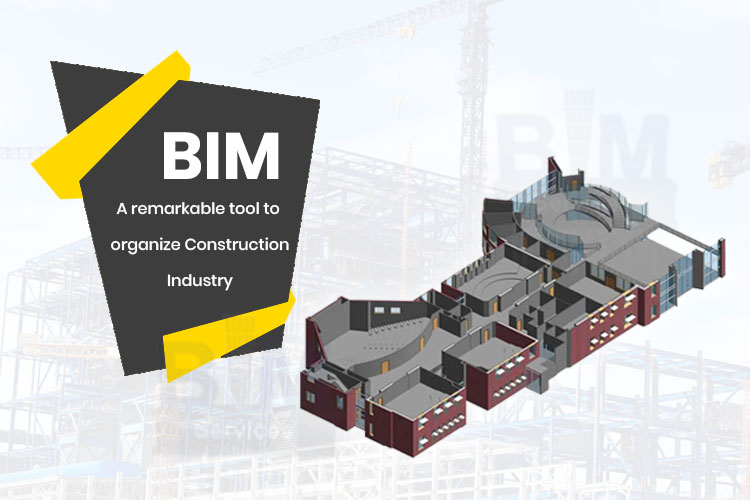BIM – A remarkable tool to organize Construction Industry

Overview
BIM Services are the core of Architecture, Engineering and Construction industry professionals and these services enhance their working while designing and construction of the building. The inception of Building Information Modeling technology has notably changed the way of design development of a building project. In recent years, many architectural, engineering and construction (AEC) firms have shifted to BIM from CAD. Architectural BIM Services are more useful and advantageous than any hand sketch or flat 2D CAD Drawings. The Building Information Modeling has enabled the design and construction professionals to develop a digital database in 3D space for a building project. Though CAD also helps the users to develop 3D model but a CAD model does not provide and design related information of the building.
The error free and coordinated model allows the smooth flow of onsite work which ultimately reduces the efforts of fabricators and costs of projects. The contractors can thus save time and can handover the project in scheduled time.
Table of Contents
Reasons to implement BIM tool in construction projects
1. Ability to resolve clashes digitally before on site construction
The coordinated model leads to better building quality as it is highly reliable. By resolving clashes, you can decrease the amount of rework and use that time elsewhere. With BIM, you have the chance to design it directly before you start the construction on site. It allows you to maintain a strategic distance from any changes made at last moment and unanticipated issues by empowering easy reviewing and commenting options.
2. Accessible anytime and anywhere
Cloud applications are reforming both CAD and BIM packages by taking the main part of the handling strain and executing in the cloud. This implies that complex BIM models and other data can be accessed on various devices and at numerous locations at any time, regardless of whether the stakeholder is voyaging, visiting partners in their own workplaces, or sent onsite.
3. Useful for presentation purpose
BIM models can likewise be utilized to make enlarged representations that bring designs to life, permitting anybody to perceive what the completed project will look like. This is perfect for making visual presentations to proprietors, supporters, financial specialists and different partners to survey configuration changes or assess conflicts between frameworks in a vivid 3D condition.
4. Cost Estimations
Numerous AEC firms are understanding that getting estimators on board prior to the designing and planning stage aids in effective construction cost estimation, which has provoked the growth of model-based cost evaluating which is now known as 5D BIM. Utilizing BIM tools robotizes the tedious errand of evaluating and applying costs, permitting estimators to concentrate on higher worth components, for example, distinguishing construction assemblies and calculating risks.
5. Enables efficient scheduling and sequencing
Though most of the advantages stated benefits us by saving costs, however they also save us time by reducing the hours of project cycles and schedule setbacks. BIM permits design and documentation to be done simultaneously, and documentation can be effortlessly changed to adjust to new data such as site conditions. Schedules can be strategized all the more efficiently and imparted precisely, and the improved coordination allows the ongoing projects to be finished on-schedule or early.
6. Aids in prefabrication and modular construction
BIM information can be utilized to quickly create production drawings or databases for assembling purposes, considering increased utilization of construction and modular construction technology by the construction professionals. By designing, building and assembling offsite in a controlled domain, you can reduce wastage, increase proficiency, and diminish work and material expenses.
7. Improved facility management
Managing building through its entire life-cycle post construction is the new dimension. The data in a model additionally empowers operations of any building after construction is finished, giving a ROI well after task completion. Information can be sent into existing structure maintenance software and for post-occupancy use.
Conclusion
BIM Services can be applied to create architectural, structural and MEP models which has the ability to contain immense degree of details in them. These models represent the information pertaining to designs, construction, operations and scheduling to the individuals working on the project. This information is very crucial as it helps to efficiently organize the onsite construction. Thus it can be said that BIM Services can be optimized to examine the design and the complications in the designs can be removed by resolving clashes digitally.